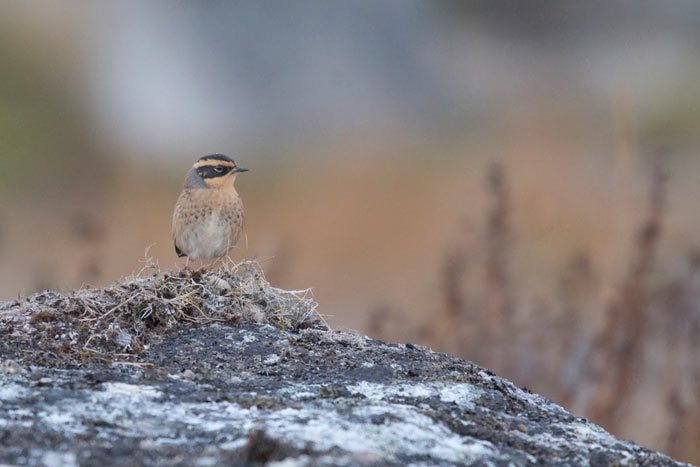Fall birding in Gambell, Alaska
By Anne Hoff
Sitting on a plastic mat on a pebble beach, the wind blowing at 30 miles per hour from the north, I join a line of thirty warmly bundled birders watching the wild Bering Sea. A slight windbreak is provided by the line of all-terrain vehicles along the flat ridge of the beach behind us. Though the temp is 40 Fahrenheit, it’s cold!
Thus begins a birding day at the Siberian Yupik village of Gambell on the Northwest Cape of treeless St. Lawrence Island, Alaska. The population of 680 native residents swells for a few weeks from mid-May to June and from mid-August to October each year by up to 50 non-islanders who seek a view of birds found nowhere else in North America, as well as surprise Asian vagrants that draw big-list birders.
Part of the Bering Land Bridge during the last Ice Age, St. Lawrence Island is about 20 miles by 100 miles. It now lies 45 miles off the coast of the Chukotsk Peninsula of Siberia and 195 miles WNW of Nome. (You truly can see Russia while doing a sea watch!)
I travelled there as part of a ten-person, 11-day tour with Wilderness Birding Adventures. We flew to Nome and then transferred to a 12-seat plane for the flight to Gambell. Luckily, all of our food — omitted from our flight due to weight limitations — arrived on the next flight.
When the tiny plane door opened, tour guide Aaron Lang looked in and said, “Are you Anne?” It turns out that I was the only newbie to this company and one of only two new to the island. Aaron knew everyone else on the tour and most of them knew several others. I discovered that Gambell birding etiquette required that everyone who wanted to see a bird sighted by anyone in any group on the island be summoned by radio while the finder “sat on” the bird and held off photographers who risked flushing the bird while others raced to the site. This fits the definition of “chasing birds.”
Aaron’s first announcement was, “There’s a Gray-tailed Tattler just reported from along the lake just down the airstrip, so instead of going to the house first, we’ll head down to find it.” We left our luggage on the tarmac (no terminal) and climbed aboard the “birder’s bus”, a two-wheeled open-air cart holding six passengers pulled behind an ATV (also known as “four-wheeler”).…

